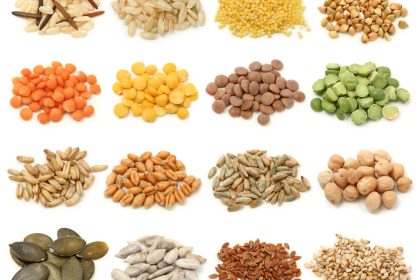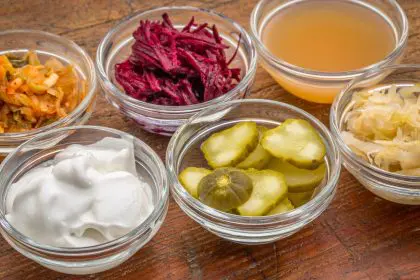Recent developments in gluten-free baking have transformed the landscape of bread alternatives, offering unprecedented taste and nutritional value. Modern gluten-free breads combine innovative ingredients with traditional baking methods, creating products that rival conventional bread in both flavor and health benefits.
Market evolution and innovation
The gluten-free bread sector has witnessed remarkable advancements in recent years, moving beyond simple wheat alternatives. As consumer demand for healthier options grows, manufacturers have innovated to create products that are not only free from gluten but also offer superior nutritional profiles. This evolution has shifted gluten-free bread from a niche market to a mainstream choice for people with gluten sensitivity, celiac disease, or those simply seeking a healthier alternative.
Early gluten-free products were often criticized for their texture, flavor, and nutritional inadequacies. However, the latest offerings in the market feature improved taste, better texture, and higher nutritional content, making them viable alternatives for anyone seeking bread products without the gluten. These innovations combine traditional baking techniques with modern ingredients, creating bread that rivals traditional loaves in both taste and texture.
Nutritional advancements
One of the key aspects of recent gluten-free bread innovations is the emphasis on improving the nutritional density of the products. Gluten-free bread today is not just a substitute but a health-forward option, providing increased fiber, protein, and essential nutrients. Some of the major ingredients contributing to this nutritional boost include ancient grains, seeds, and nuts. These ingredients help to enrich the bread’s nutritional profile, offering consumers a healthier choice without compromising on flavor.
Ancient grain incorporation has become a cornerstone of many premium gluten-free breads. Grains such as quinoa, millet, and teff are being added to the mix, providing a wide range of nutrients including fiber, iron, and antioxidants. These grains not only enhance the nutritional value of the bread but also contribute to its rich, nutty flavor.
Seed and nut integration is another trend contributing to the high nutritional content of gluten-free breads. Seeds like chia, flax, and sunflower add omega-3 fatty acids, fiber, and protein, while nuts bring essential minerals and healthy fats. Together, they create a more balanced bread option that supports a variety of health goals, from digestive health to heart health.
The addition of fiber and protein also helps gluten-free breads meet the growing consumer demand for functional foods. Fiber aids in digestion and promotes satiety, while protein contributes to muscle health and overall wellness. These advancements ensure that gluten-free bread is not just a replacement for wheat-based bread but a substantial addition to a healthy diet.
Top-rated products analysis
The evolution of gluten-free bread has brought about several standout products that have received widespread acclaim for their taste, texture, and health benefits. These products exemplify the best of modern gluten-free baking, combining the latest innovations with consumer demand for quality and nutrition.
Premium sourdough alternatives like Schar Bread Deli Style Sourdough lead the market, offering an authentic sourdough flavor paired with high fiber content. This bread stands out for its extended shelf stability, making it a practical choice for consumers seeking both flavor and convenience. Certified gluten-free, it provides a guilt-free indulgence for those avoiding gluten while still delivering a satisfying and hearty taste.
Ancient grain innovations are represented by products like Canyon Bakehouse Ancient Grain Bread, which uses a blend of quinoa, millet, and oats. This bread offers traditional bread texture with superior nutritional benefits, including a balanced protein and fiber content. It’s also allergen-free, making it suitable for individuals with multiple dietary restrictions.
Omega-rich selections, such as Udi’s Omega Flax & Fiber Bread, stand out for their heart-healthy benefits. Rich in omega-3 fatty acids and fiber, this bread supports cardiovascular health and digestive well-being. With its balanced texture, it satisfies both the health-conscious and those craving a filling, nutritious bread option.
Sprouted grain options like Food for Life Original 3 Seed Bread provide unique benefits that set them apart from traditional gluten-free breads. Sprouting grains increases their nutrient density, making them richer in vitamins, minerals, and antioxidants. Organic certification ensures that these breads are free from pesticides and other harmful chemicals.
Keto-friendly alternatives such as Base Culture 7 Nut and Seed Bread cater to those following low-carb or paleo diets. These breads are rich in healthy fats and protein, providing a filling, low-carbohydrate option that supports weight management and overall health.
Health impact analysis
The health benefits of gluten-free bread go beyond the absence of gluten. Research suggests that these products offer significant digestive and nutritional advantages, contributing to better overall wellness.
Digestive benefits are one of the most notable health impacts of modern gluten-free breads. Ingredients like seeds, nuts, and ancient grains promote better gut health by improving nutrient absorption and reducing inflammation. Many gluten-free breads also feature added fiber, which aids digestion and contributes to improved bowel regularity.
Nutritional advantages are found in the increased mineral and vitamin content of these breads. For example, the incorporation of seeds and nuts boosts the intake of essential minerals such as magnesium, calcium, and iron. Fiber-rich breads can help lower cholesterol levels, while the addition of proteins aids in muscle repair and maintenance.
Selection criteria
When choosing a gluten-free bread, several key factors should be considered to ensure it meets both taste and health needs. Texture considerations are essential for a satisfying eating experience. Look for bread with a good crumb structure, moisture retention, and quality crust. A perfect gluten-free loaf should hold together well without being too dry or crumbly, and it should toast nicely without becoming too hard.
Ingredient evaluation is another critical factor in selecting gluten-free bread. Pay attention to the label for clean ingredients, avoiding unnecessary preservatives and additives. Opt for breads with a high nutrient density and consider those that use whole, natural ingredients to maximize health benefits.
Storage and handling play an important role in maintaining the freshness and longevity of gluten-free bread. Proper storage conditions, such as freezing bread or keeping it in a cool, dry place, are essential to prevent spoilage and maintain its quality over time.
Future developments
The gluten-free bread market continues to evolve, with innovation at the forefront of the industry. Research trends suggest that future developments will focus on improving texture, refining nutritional profiles, and extending shelf life. New grain varieties may emerge, offering even more health benefits, while advancements in baking technology may improve the overall quality of gluten-free products.
Market evolution indicates that gluten-free bread will become more accessible, affordable, and varied in the coming years. With increased availability and improved quality, gluten-free breads are poised to become a staple in households around the world, offering an inclusive and nutritious bread alternative for people with dietary restrictions or lifestyle preferences.
In conclusion, gluten-free bread has come a long way from its early, limited offerings. Today’s gluten-free breads provide delicious, nutritious alternatives to traditional bread, meeting the growing demand for health-conscious and allergen-free foods. Whether you’re avoiding gluten for medical reasons or making a lifestyle choice, the modern gluten-free bread market offers a variety of options to suit every taste and dietary need.














